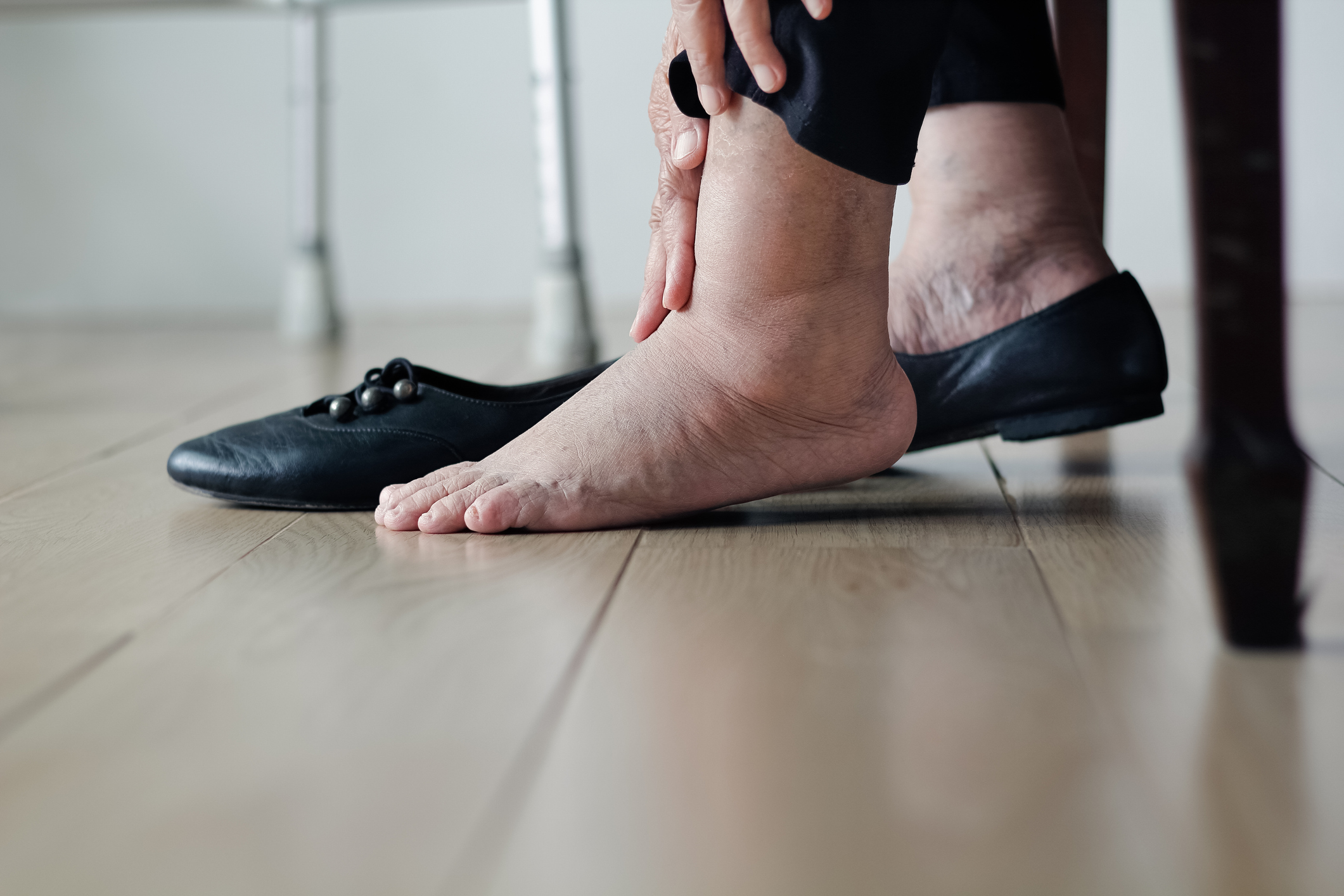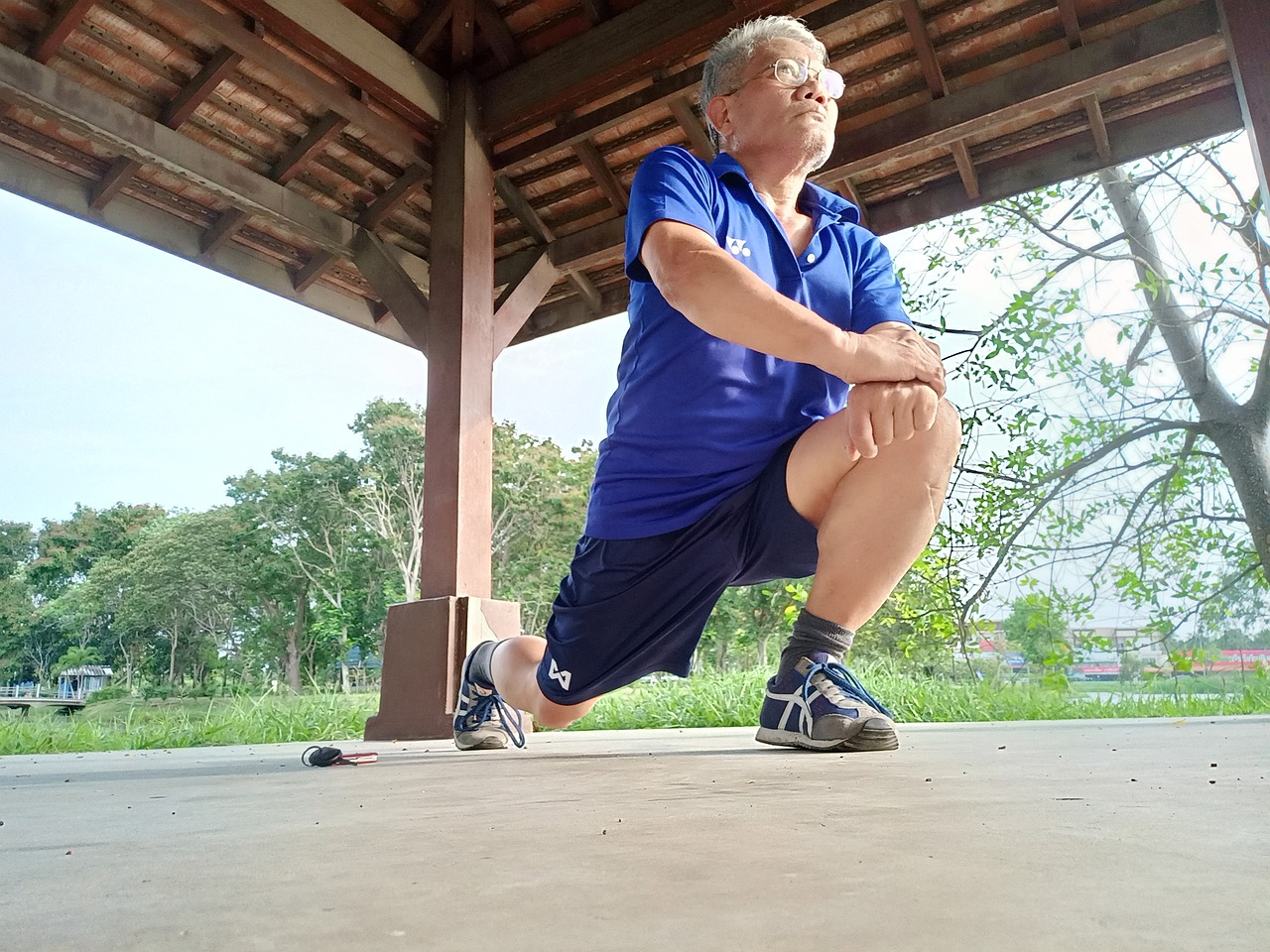Healthy Blood Circulation in the Ankles and Legs
Healthy circulation in the legs and ankles is essential to stay active and healthy. The question of how our bodies manage to secure the necessary oxygen and nutrients for effective operation finds its answer in the complexity and efficiency of the human vascular system.
The circulatory system is also instrumental in removing metabolic waste and ensuring the body's cleanliness and optimal performance. Poor blood circulation can lead to various health issues and impact your cardiovascular and overall health.

How Do I Keep My Vascular System Healthy?
Certain lifestyle choices can make a significant difference in keeping your vascular system in top shape.

Stay Active
Regular exercise, such as walking, swimming, or cycling, promotes healthy blood flow and strengthens your cardiovascular system.

Eat a Balanced Diet
Include foods rich in nutrients like fruits, vegetables, whole grains, and lean proteins. Avoid excessive intake of unhealthy fats and processed foods, which can contribute to arterial blockages.

Stay Hydrated
Drinking adequate water helps maintain proper blood volume, ensuring optimal circulation. Focus on more hydrating choices like water, low-calorie fruit and vegetable juices, or sparkling water over sugary drinks like soda or coffee.

Don't Smoke
Smoking damages blood vessels, reducing blood flow and increasing the risk of vascular diseases. Talk to your medical provider if you want to learn more about quitting or need support quitting smoking.

Manage Stress
Chronic stress can negatively impact blood pressure and overall vascular health. Find healthy ways to manage stress, such as practicing mindfulness or engaging in hobbies you enjoy.
What's Causing My Ankle Swelling?
The term for swelling in the ankles, feet, or legs is edema. Often, this swelling is temporary, resulting from short-term factors, and resolves independently.
Several common factors contributing to fluid accumulation in the ankles are linked to lifestyle choices:
- Excessive body weight
- Limited physical activity
- High salt intake in the diet
- Pregnancy
- Certain medications
- Muscle strains or sprains
- Insect stings or bites
- Leg vascular disease
- Foot vascular disease
- Infections
- Lymphedema
During pregnancy, normal swelling of the ankles can occur due to increased body weight, reduced mobility, prolonged standing, and restricted blood flow. Additionally, some medications can lead to fluid retention, causing the ankles to appear puffy.
In certain instances, swelling of the ankles may indicate a more severe underlying vascular condition that requires prompt medical attention and possibly intervention. It's generally possible to distinguish between swelling caused by extended periods of standing or sitting and swelling due to more severe health issues.
Think you may have symptoms of Ankle Swelling?
Am I at Risk for Vascular Disease?
When understanding the implications of swollen ankles, it's essential to recognize the various factors that can contribute to this condition and what it may signify about your vascular health. Swollen ankles aren't just a discomfort; they can sometimes be a red flag for underlying health concerns, including vascular disease.
Risk factors for vascular disease include but aren't limited to:
- Age
- Gender
- Pregnancy
- Diabetes
- High Cholesterol
- Hypertension
- Obesity
- Smoking
- Blood clotting problems.
- Illness
- Injury.
If you experience persistent or severe swelling in your ankles, it's advisable to seek medical advice to determine if it's a sign of vascular disease or other health concerns.
Symptoms of Vascular-Related Ankle Swelling
If you've noticed your ankles tend to swell up, either occasionally or regularly, it's not uncommon and can sometimes point to issues with blood flow. This swelling might vary, being either light or more pronounced, and it could affect one or both ankles.
Changes to Your Skin
Circulation issues can also lead to noticeable changes in the skin around your ankles. You might see the skin taking on a reddish or bluish shade or even developing brown patches. Some find their skin looks shiny, feels tighter, or seems thicker than usual.
Leg Ulcers
For some patients, especially those with diabetes, swelling in the ankles might lead to leg ulcers. These are sores that open up, usually on the lower legs or ankles, and they can be uncomfortable and increase your risk of chronic wounds and infections.
Varicose Veins
Alongside swelling, you might notice varicose veins, which are large, twisted veins just under the skin. They might stand out and look like bulging cords, a sign of changes in your circulation.
Pain or Discomfort
Swelling in the ankles due to vascular issues might also bring some discomfort. You could feel pain, an aching sensation, or a feeling of heaviness in the legs. Aching or discomfort is more noticeable after standing or sitting for a long time.
It's essential to listen to your body and notice these signs. While ankle swelling is often manageable, it can be your body's way of asking for more care or a signal to check in with a healthcare provider to keep your circulation in the best shape possible.

What Are Vascular Diseases and How Do They Affect Me?
Vascular diseases arise from factors like aging, genetics, or lifestyle choices, impacting blood flow in arteries and veins and leading to potential health issues. Critical conditions associated with ankle swelling include:
Deep Vein Thrombosis (DVT): Deep vein thrombosis (DVT) occurs when a blood clot develops in the leg's deep veins. The primary symptom of DVT is swelling in the leg, with peripheral swelling being a common occurrence in many cases.
Superficial Venous Insufficiency (SVI) or Varicose Veins: Visible, uncomfortable, enlarged leg veins.
Atherosclerosis (Peripheral Arterial Disease, PAD): Arterial plaque build-up, hindering blood flow and heightening heart attack and stroke risks.
These conditions can cause blood to pool in the legs due to vein compression or blockage, leading to symptoms like swollen ankles and feet, leg skin changes, and ulcers.
How Do I Treat Ankle Swelling?
Ankle swelling can be a symptom of various underlying vascular conditions. Recognizing the specific symptoms associated with vascular-related ankle swelling is crucial for effective treatment.
Basic home treatment to alleviate swollen ankles include:
- Rest
- Ice
- Compression
- Elevation
By reversing the lifestyle changes that result in ankle swelling, you can improve your overall health and alleviate your swollen ankles.
Smoking causes damage to your blood vessels and can result in amputations as well as many other chronic diseases.
Excess weight puts pressure on your body and can increase ankle swelling. Reducing this weight helps reduce swelling.
Standing and sitting for hours promotes ankle swelling as fluid pools in your lower limbs. Walking and exercising help to promote better circulation.
Processed food contains a high level of salt; switching to a fresh, natural diet provides the nutrients your body needs and maintain health.
Applying compression to the lower leg encourages the blood or fluid flow upwards - support stockings are an option.
If you have a medical condition that contributes to swollen ankles, then managing your condition will help your ankles.
Allowing the fluid to drain out of your ankle when sitting or lying down will help reduce swelling. Use a footstool or other supports to raise your legs as often as possible. Raising the ankle above your heart by lying down and propping your legs at an angle on pillows allows gravity and blood flow to reduce the swelling.
There are exercises for your feet and ankles that promote better movement and better circulation.
In severe cases, there are surgical interventions to clear blockages and reinforce blood vessels. These generally involve the use of a catheter and some simple medical processes carried out with a local anesthetic.
Taking the pressure off your ankles by resting your feet allows the fluid build up to disperse naturally. Even if you intend to visit a doctor, it makes sense to rest your ankles to help the swelling go down.
The most common drugs for ankle swelling are diuretics to prevent fluid retention through increasing urination. Increased urine also helps to remove excess salt from the body. There are three types of diuretic useful for treating symptoms associated with issues causing ankle swelling:
- Thiazide diuretics - relax the blood vessels.
- Loop diuretics - used in cases of heart failure.
- Potassium-sparing diuretics - keeps potassium in the body.
- Painful swelling associated with injuries responds well to standard anti-inflammatory and pain relief medication available without a prescription.
Cholesterol medication and drugs to stop the formation of blood clots are also useful treatments that your doctor may recommend.
For a bacterial infection (like cellulitis), it is necessary to take a course of antibiotics.
If the ankle swelling results from an underlying medical condition, then effective management of the condition reduces the ankle swelling.

How Is Ankle Swelling Diagnosed?
When you visit a vascular specialist for swollen ankles, they'll use a thorough approach to determine what's causing the problem.
Discuss Your Symptoms: First, they'll talk with you about your symptoms, your health history, and any lifestyle habits or past health issues that might affect your blood vessels. They'll also want to know if this issue runs in your family.
Physical Exam: Then, the specialist will examine your ankles closely. They'll look at how swollen they are, check your skin for changes or sores, look for any varicose veins, and ask for a urine sample to test.
Imaging and Ultrasounds: A special kind of scan called a duplex ultrasound lets the doctor see how blood flows in your veins and arteries. It's a painless way to spot blockages or other issues without making any cuts.
Blood Tests: Sometimes, a blood test can tell the doctor if something like clotting or inflammation might be causing your swelling.
More Detailed Images: In some cases, they might need a more straightforward look at your veins with a venogram, which helps them see your blood flow better.
The whole process is designed to be as easy and comfortable as possible to determine why your ankles are swollen and the best treatment plan for you.
Center for Vascular Medicine is committed to providing affordable and empathetic care for individuals with vascular conditions. Our specialized knowledge focuses on diagnosing and treating vein and artery diseases, especially those affecting the legs, feet, and pelvis.
Book a consultation online or call us at (301) 486-4690 to talk with our friendly and professional patient support team. We welcome patients from Annapolis, MD, Columbia, MD, Easton, MD, Glen Burnie, MD, Greenbelt, MD, Prince Frederick, MD, Silver Spring, MD, Waldorf, MD, Fairfax, VA, Fredericksburg, VA, New Brunswick, NJ, and Union, NJ.
Ready to speak with a vascular specialist?



